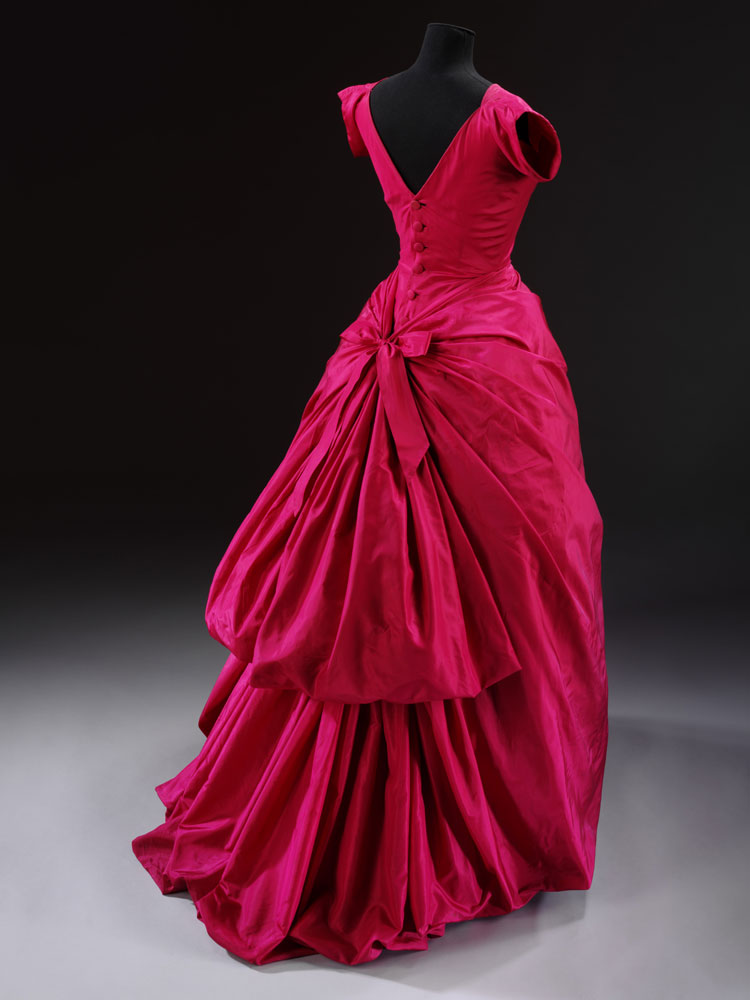Last year, five MA Pattern and Garment Technology students worked the V&A on a project, for the Balenciaga: Shaping Fashion exhibition, which opens to the public this weekend. The project was part of a Collaborative Unit where students had to study a minimum of two Balenciaga masterpieces from the archives, and reproduce them both digitally, using contemporary digital software like Gerber, as well as manually pattern drafting and toiling.

Alberta Tiburzi in ‘envelope’ dress by Cristóbal Balenciaga, Harper’s Bazaar, June 1967 © Hiro 1967
We spoke to two of the students that took part, Elizabeth Nsubuga and Claire Hardie, to find out about the experience.
What was it like working on the Balenciaga project with the V&A?
Elizabeth: This was a perfect project for us as pattern and garment technologists. It was also very challenging because we had to imagine what we could not see and reproduce it, as the garments were already finished. It helped us to compare the different ways of garment construction and finishing, to see how far it has come from the 1950s to now.
Claire: The main aim of the project was to see if digital pattern technology could apply to vintage couture. Since our MA degree allows us to use digital pattern cutting software, we could input the patterns we created from the archive pieces and analyse them inside a computer. As fashion students it was interesting to see how the patterns and seam allowances differed from modern “fast fashion” patterns.
What were the highlights?
Elizabeth: I enjoyed working on project very much and I strongly believe that all pattern and garment technology students should be given the opportunity to study these garments. My personal highlight was the realisation that although the garment looked like it would be much easier to reproduce, turned out to be the most challenging. I had to learn a different way of pattern drafting, in order to re produce the finished garment.
Claire: This project was the opportunity of a lifetime! As a theatrical costumier I am very interested in mid 20th century fashion, and to spend so much time with these incredible pieces was amazing. Working alongside the curation team at the V&A added an extra dimension to the experience too. They shared their research and insights into the owners of the clothes, which enriched our understanding of the context of the clothes.
Why are Balenciaga designs so inspiring for pattern and garment technologists?
Elizabeth: The guy is just a genius! Take for example the Tulip dress; it looks like it is a free hanging dress but the inside is a corseted body, which looks like it was molded on a normal bra and tells a whole different story. I mean, we are talking about the 50s and this is the sort of thing he was doing; I wonder what he would be coming up with today. Also, looking at the Baby Doll dress, you would never believe the amount of fabric used to make it and the technique used to produce such a very fitted, yet free looking dress.
Claire: I love the clean modern timeless design of Balenciaga, and am inspired by many modern designs that have echos of Balenciaga. For example I love Cos clothes, and can really see the influence of Balenciaga in their design.
What are you up to at the moment?
Elizabeth: I am working part time with Hussein Chalayan, and at the same time trying to make my own collection.
Claire: I am a flexible MA student, working full time alongside my studies so am still completing my degree. I work as the sewing producer for the great British Sewing Bee, and teach home sewing in north London.
The Balenciaga: Shaping Fashion exhibition opens on Saturday 27 May, until 18 February 2018.
- Find out more about the exhibition and book tickets
- Find out more about the collaboration with LCF
- Find out about MA Pattern and Garment Technology
- Find out about BA (Hons) Fashion Pattern Cutting
More information:
- Find out more about other undergraduate courses at LCF
- Find out more about postgraduate courses at LCF
- LCF Open Days and Events
- Find out more about Funding and Mentoring
- More LCF News stories
- More information on LCF Careers
- Want to write for LCF News? Send your pitches to communications@fashion.arts.ac.uk
Alumni can connect with LCF in the following ways:
- Stay in touch
- Access LCF graduate talent
- LCF alumni privileges
- Professional development
- Enterprise support
- UAL groups
- LinkedIn and Facebook
- LCF Fashion Network
- Contact LCF Alumni here: alumni@fashion.arts.ac.uk

